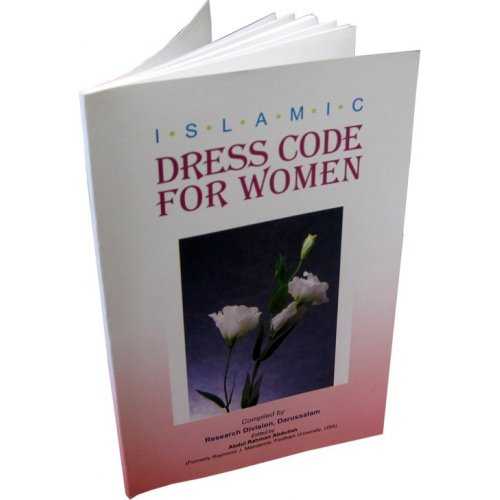




 Read the review
Read the review
| Subtitle | الزي الشرعي للمرأة |
| Author | Mahmoud Ridha Murad |
| Binding | Paperback |
| Pages | 64 |
| Size in Inches | 5.5x8 |
| Size in CM | 14x20 |
| Weight (lbs) | 0.2 |
"Islamic Dress Code for Women" by Mahmoud Ridha Murad is a detailed exploration of the principles and guidelines regarding modest dress for Muslim women as prescribed in Islamic teachings. The book aims to provide a comprehensive understanding of the religious, cultural, and social aspects of the Islamic dress code. Here are some key features and themes of the book:
Religious Foundations: The book begins by discussing the Qur'anic verses and Hadiths that outline the requirements and significance of modest dress for women in Islam. It provides explanations of the key texts that form the basis of the dress code.
Principles of Modesty: Mahmoud Ridha Murad emphasizes the concept of modesty (haya) in Islam and how it applies to women's dress. The book explores the broader notion of modesty beyond clothing, encompassing behavior and interaction with others.
Detailed Guidelines: The book provides specific guidelines on what constitutes appropriate Islamic dress for women. This includes details on the type of clothing, coverage requirements, and acceptable styles and materials.
Cultural Variations: While maintaining the core principles of the Islamic dress code, the book acknowledges cultural variations and how different Muslim communities interpret and practice these guidelines. It provides examples from various cultures to illustrate these differences.
Common Misconceptions: The book addresses and clarifies common misconceptions and criticisms related to the Islamic dress code for women. It aims to provide a balanced and informed perspective to counter misunderstandings.
Historical Context: The book includes a historical overview of women's dress in Islamic societies, showing how the practice has evolved over time while staying rooted in religious principles.
Practical Advice: Mahmoud Ridha Murad offers practical advice for Muslim women on how to incorporate the dress code into their daily lives. This includes tips on selecting appropriate clothing, balancing fashion with modesty, and dealing with societal pressures.
Spiritual Significance: The book highlights the spiritual benefits and significance of adhering to the Islamic dress code. It explains how modest dress is a form of worship and a means of gaining closeness to Allah.
Impact on Identity: The book discusses how Islamic dress plays a role in shaping and expressing a Muslim woman's identity. It examines the personal and communal aspects of wearing modest clothing.
Responses to Modern Challenges: The book addresses contemporary issues and challenges that Muslim women may face regarding dress, such as in the workplace, in educational settings, and in Western societies. It offers guidance on navigating these challenges while maintaining Islamic principles.
"Islamic Dress Code for Women" by Mahmoud Ridha Murad serves as a comprehensive guide for understanding and practicing modest dress in Islam. It provides valuable insights for Muslim women and anyone interested in learning about the principles and significance of Islamic attire.
